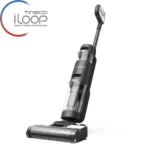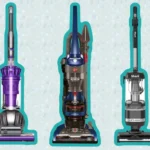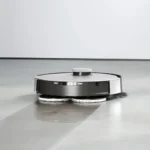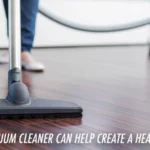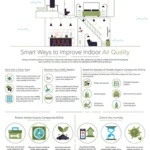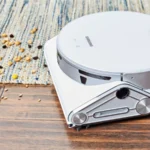Have you ever wondered why you still suffer from allergies even though you’ve diligently cleaned your home? Well, it might just be because you’re using the wrong vacuum cleaner. The good news is that with the advent of smart vacuum cleaners, you can now clean your home with ease while effectively reducing allergens and improving indoor air quality. In this comprehensive guide, we’ll explore everything you need to know about smart vacuum cleaners, indoor air quality, and how you can use a smart vacuum cleaner to improve your home’s air quality and reduce allergens. So grab a cup of coffee and let’s get started!
What are Smart Vacuum Cleaners?
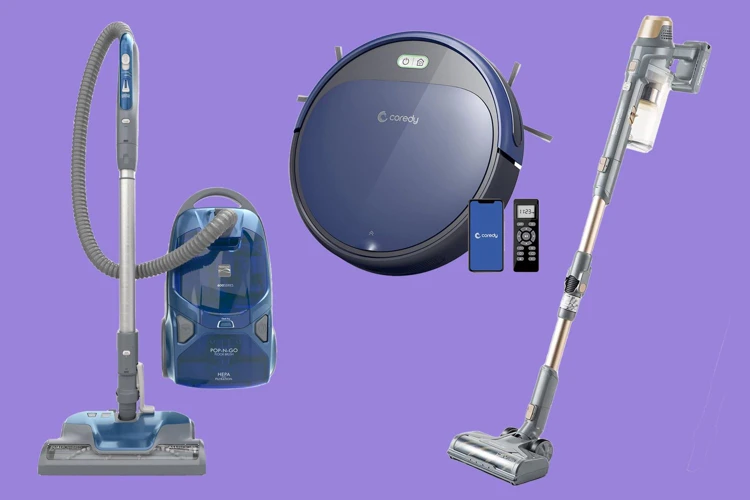
Smart vacuum cleaners are a modern version of the traditional vacuum cleaner that have taken cleaning to the next level. These high-tech devices use intelligent software and a range of sophisticated sensors and mapping technology to perform cleaning tasks without any manual intervention from the user. They come in various models and designs to cater to different user needs and are equipped with advanced features that make them more efficient and effective at cleaning compared to traditional vacuum cleaners.
One of the main features of smart vacuum cleaners is their ability to be controlled remotely. This means that users can operate them from their smartphones and laptops or even with voice commands through smart speaker systems. This feature is particularly beneficial for the elderly or disabled who may find it challenging to move around a traditional vacuum cleaner (link to /smart-vacuum-elderly-disabled/).
Smart vacuum cleaners also come with a range of features that make them ideal for pet owners. The advanced suction technology and rotating brush heads ensure that pet hair, dander, and other debris is effectively picked up off floors and furniture. This is a significant benefit, as pet hair and dander can cause allergies and respiratory problems, especially for people who are sensitive to these allergens (link to /benefits-smart-vacuum-pet-owners/).
Another great benefit of smart vacuum cleaners is the ability to schedule cleaning tasks. With this feature, users can set up a cleaning schedule for their device to ensure that their home is always clean without any intervention required for the user (link to /smart-vacuum-schedule/). This scheduling feature is especially useful for busy individuals who may not have time to clean their homes every day.
One of the key differences between smart vacuum cleaners and traditional vacuum cleaners is the use of sensors and mapping technology. These sensors and mapping technologies allow smart vacuum cleaners to navigate around obstacles, like furniture or stairs (link to /smart-vacuum-sensors-mapping-tech/). In contrast, traditional vacuum cleaners require manual intervention to navigate around obstacles, wasting time and energy. Additionally, this technology allows smart vacuum cleaners to map out the area being cleaned, so they don’t miss any spots.
Finally, smart vacuum cleaners are also environmentally friendly. They are designed to consume less energy than traditional vacuum cleaners, and some models are even equipped with advanced filtration systems to capture fine dust and allergens that are harmful to human health (link to /smart-vacuum-cleaner-environment/).
Smart vacuum cleaners are a significant advancement in home cleaning technology. They are more efficient, more effective, and easier to use than traditional vacuum cleaners, and they offer a range of benefits that make them an excellent investment for any home.
How Do They Work?
Smart vacuum cleaners are modern, technologically advanced versions of traditional vacuum cleaners that are designed to improve the indoor air quality and reduce allergens. These devices are equipped with sophisticated sensors and intelligent software that enables them to map out the house and navigate around obstacles. So, how exactly do smart vacuum cleaners work? Unlike traditional vacuum cleaners that require human intervention, smart vacuum cleaners are autonomous devices that can operate on their own, without any input from the user. They use a combination of sensors, cameras, and software to detect and navigate around obstacles and to map out the entire house. This allows them to move seamlessly from room to room, cleaning every inch of the floor along the way. To learn more about the differences between smart vacuum cleaners and traditional vacuum cleaners, check out our article on smart vacuum cleaners vs. traditional vacuum cleaners.
What Are the Benefits of Using a Smart Vacuum Cleaner?
Using a smart vacuum cleaner brings numerous benefits to homeowners. These innovative home appliances can not only clean your floors but can also provide significant improvements to your indoor air quality. Here are some of the top advantages of using a smart vacuum cleaner:
| Benefits of Using a Smart Vacuum Cleaner |
|---|
| Efficient cleaning |
| Improved indoor air quality |
| Automated scheduling |
| Wi-Fi or app-enabled control |
| Allergen-specific features |
| Reduced workload for homeowners |
One of the most significant benefits of using a smart vacuum cleaner is efficient cleaning. With advanced sensors and powerful suction capabilities, these devices can remove dust, dirt, and debris from your floors quickly and easily. This can greatly reduce the amount of time and effort homeowners need to spend on cleaning their homes.
Another advantage of using a smart vacuum cleaner is the improvement of indoor air quality. These devices come equipped with advanced filtration systems that can remove up to 99% of indoor air pollutants that trigger allergies and respiratory problems.
Smart vacuum cleaners also come with automated scheduling capabilities that allow them to clean your floors at specific times of the day or week. This feature makes it easy for homeowners to keep their floors clean and tidy without having to manually start the cleaning process every day.
Moreover, wi-fi or app-enabled control capabilities allow homeowners to control the smart vacuum cleaner from their smartphones or tablets. This means they can start, pause, or stop the cleaning process remotely, and even monitor the cleaning progress in real-time.
Smart vacuum cleaners also come with allergen-specific features such as HEPA filters that can capture even the smallest allergens such as dust mites and pollen. This is especially useful for people who suffer from allergies or asthma.
Finally, using a smart vacuum cleaner can reduce the workload for homeowners, as they are no longer required to manually vacuum their floors. This results in more time for other important activities, such as spending time with family, reading books, or pursuing hobbies.
Using a smart vacuum cleaner brings numerous benefits that can greatly improve the quality of life for homeowners. From efficient cleaning and improved indoor air quality to allergen-specific features and reduced workload, these devices offer an innovative and effective solution for keeping homes clean and healthy.
Why is Indoor Air Quality Important?
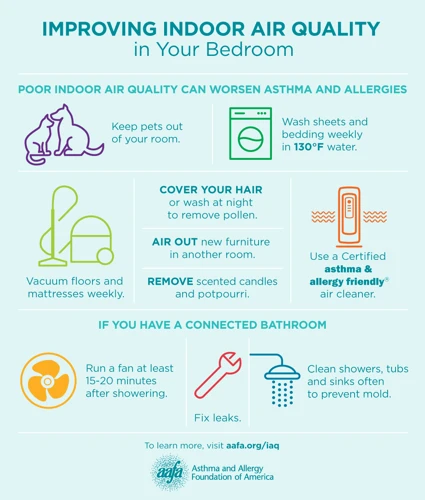
The quality of air inside a house plays a vital role in maintaining good health, especially when you spend most of your time indoors. Indoor air quality (IAQ) is critical not only for people suffering from allergies or respiratory conditions but also for every individual in general. Poor air quality can result in health issues that can range from mild to severe. Most people don’t realize that the quality of air inside their homes can be worse than the air outside. It is because of factors such as inadequate ventilation, poor filtration systems, and accumulation of dust and allergens.
Poor indoor air quality can lead to a range of health problems, including headaches, sinus congestion, fatigue, and eye irritation. In some cases, it may cause more severe symptoms, such as respiratory disorders, cardiovascular disease, or even cancer. The health risks are higher when someone in the house suffers from allergies or asthma because they are more susceptible to airborne pollutants. The adverse effects of poor IAQ can be seen in adults, children, and even pets.
The consequences of poor indoor air quality are not limited to health issues. It can also lead to higher energy costs as the HVAC (heating, ventilation, and air conditioning) system has to work harder to maintain air quality. Poor air quality can cause damage to furnishings, electronics, and other household items, resulting in costly repairs or replacements.
It is therefore essential to keep the indoor air quality at a healthy level for maintaining a healthy and comfortable living environment. This can be achieved by adopting various measures to minimize the accumulation of pollutants inside the house. Using a smart vacuum cleaner with advanced filtration systems and effective allergen removal can significantly contribute to improving air quality.
What are Allergens and Why Are They Harmful?
Many people suffer from allergies, which can make life difficult and uncomfortable. Allergens are substances that trigger allergic reactions, which can range from mild to severe. Allergens are found in many common household items and activities, such as pet dander, dust mites, pollen, and cleaning products. When allergens come into contact with the body, they can cause an immune system response that leads to symptoms such as sneezing, coughing, and itchy eyes. In severe cases, allergic reactions can even lead to life-threatening conditions such as anaphylaxis. In this section, we’ll explore what allergens are and why they are harmful.
What Are the most Common Allergens Found in Homes?
Indoor allergies can be triggered by a variety of allergens commonly found in homes. Here are some of the most common allergens that can cause problems for people:
| Allergen | Symptoms |
|---|---|
| Dust Mites | Itchy and watery eyes, runny nose, sneezing |
| Pet Dander | Coughing, wheezing, shortness of breath, skin rashes |
| Mold Spores | Congestion, headache, dizziness, fatigue, flu-like symptoms |
| Pollen | Itchy eyes, runny nose, sneezing |
| Cockroach Droppings | Coughing, wheezing, shortness of breath, skin rashes |
Dust mites are a type of microscopic creature that feed on dead skin cells and multiply in warm and humid environments. Pet dander consists of tiny particles shed by dogs, cats, and other animals that can remain airborne for long periods of time. Mold spores can be found in damp areas of homes, such as bathrooms and basements, and can cause a variety of respiratory problems. Pollen is a common outdoor allergen that can be brought into homes through open windows and doors. Finally, cockroach droppings can lead to allergic reactions, particularly in urban areas, due to the proliferation of these insects in cities.
If you suspect that you may be allergic to any of these common household allergens, it’s important to take steps to minimize your exposure to them. A smart vacuum cleaner with advanced filtration systems can help you efficiently and effectively remove these allergens from your home’s surfaces and improve your indoor air quality.
How a Smart Vacuum Cleaner Can Improve Indoor Air Quality
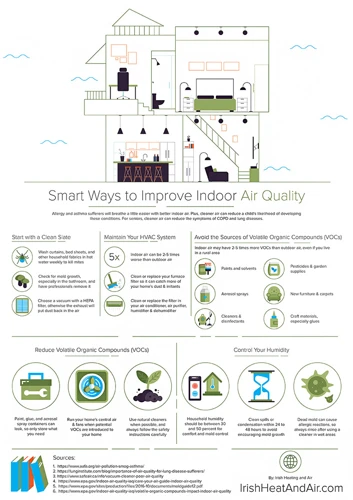
Smart vacuum cleaners have become popular in recent years due to their ability to not only remove dust and debris but also improve indoor air quality. They do this through advanced filtration systems, efficient dust and debris removal, and schedule cleaning and monitoring.
Advanced Filtration Systems: Smart vacuum cleaners come with advanced filtration systems that are designed to capture a wide range of allergens and pollutants. These filters can trap tiny particles as small as 0.5 microns, which is smaller than the thickness of a human hair. This means that harmful particles like dust mites, pollen, pet dander, and mold spores are effectively removed from the air in your home, ensuring that the air you breathe is clean and healthy.
Efficient Dust and Debris Removal: Smart vacuum cleaners are designed to efficiently remove dust and debris from all surfaces such as floors, carpets, and furniture, which helps to reduce the amount of dust and allergens in your home. The vacuum cleaners use powerful motors and brushes that can loosen and lift dirt from surfaces while trapping them in the filter.
Schedule Cleaning and Monitoring: Many smart vacuum cleaners come with scheduling features that allow you to program the vacuum cleaner to run at specific times of the day or week. This ensures that your home stays clean and free of dust, allergens, and pollutants on a regular basis. Additionally, some models have sensors that monitor the air quality in your home and adjust the cleaning intensity accordingly.
Investing in a smart vacuum cleaner can significantly improve your indoor air quality by removing harmful particles and allergens from the air you breathe. This is especially important for individuals with allergies or respiratory problems who are particularly sensitive to indoor air pollutants.
Advanced Filtration Systems
Are you tired of constantly breathing in polluted air inside your own home? Have you been searching for a solution to improve indoor air quality? Look no further than smart vacuum cleaners with advanced filtration systems. These innovative machines are equipped with high-quality filters that trap and remove even the smallest particles of dust, dirt, and allergens from your carpets and floors. By investing in a smart vacuum cleaner with advanced filtration technology, you can experience the benefits of cleaner air and a healthier living environment.
Efficient Dust and Debris Removal
One of the key benefits of using a smart vacuum cleaner is the efficiency in dust and debris removal. With advanced sensors and an intelligent cleaning system, these smart vacuum cleaners can detect and adjust their cleaning mode based on the type of surface they are cleaning.
Efficient Dust and Debris Removal is achieved through the use of strong suction power, which pulls in dirt, dust, and debris from even hard-to-reach areas. Additionally, these vacuum cleaners come equipped with high-quality filters that can trap even the smallest particles, improving the overall indoor air quality.
To illustrate this point further, we can compare traditional and smart vacuum cleaners in terms of dust removal. A traditional vacuum cleaner may miss a significant amount of debris, especially in corners and other difficult-to-reach areas, leaving behind harmful allergens that can impact indoor air quality. On the other hand, a smart vacuum cleaner with advanced sensors and suction power can intelligently navigate through these tight spaces and remove all of the dirt and debris, ensuring that allergens are kept to a minimum.
To further highlight the effectiveness of efficient dust and debris removal with a smart vacuum cleaner, below is a comparison table between traditional and smart vacuums:
| Traditional Vacuum Cleaner | Smart Vacuum Cleaner | |
|---|---|---|
| Efficiency in removing debris from corners and hard-to-reach areas | May miss a significant amount of dirt and debris | Intelligently navigates through tight spaces and removes all dirt and debris |
| Indoor air quality improvement | May leave behind harmful allergens | High-quality filters trap even the smallest particles, improving overall indoor air quality |
| Time-efficiency | Cleaning may need to be repeated multiple times to ensure all debris is removed | Quickly and effectively removes all dirt and debris in one pass |
As can be seen from the comparison table, a smart vacuum cleaner can significantly improve the efficiency of dust and debris removal, leading to a cleaner and healthier indoor environment.
Schedule Cleaning and Monitoring
Smart vacuum cleaners have the added advantage of being able to schedule cleaning and monitoring. With the scheduling feature, you can set your vacuum cleaner to clean your house at specific times of the day or week. This feature means that you don’t have to worry about manually turning on the vacuum cleaner and can go about your day-to-day activities.
The monitoring feature lets you know when the air quality in your home drops below a certain level. This feature is particularly useful for people with allergies or asthma. When the vacuum cleaner detects an increase in allergen levels, it will automatically turn on and start cleaning the affected area.
To take advantage of the scheduling and monitoring features, you will need to set up your smart vacuum cleaner using the accompanying app. The app allows you to customize the cleaning schedule, set cleaning zones, and receive alerts when the air quality drops.
With regular cleaning and monitoring, you can ensure that your indoor air quality is always at a healthy level. The scheduling feature takes away the hassle of remembering to clean, while the monitoring feature ensures that the air quality in your home is always being monitored.
Smart vacuum cleaners offer a comprehensive solution for improving indoor air quality and reducing allergens. With advanced filtration systems, efficient dust and debris removal, and the ability to schedule cleaning and monitoring, these vacuum cleaners are a must-have for anyone looking to breathe cleaner, healthier air.
How a Smart Vacuum Cleaner Can Reduce Allergens
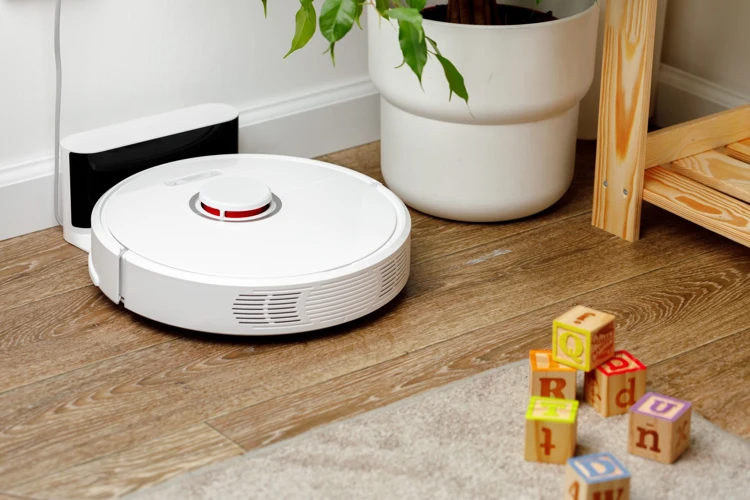
One of the most significant benefits of using a smart vacuum cleaner is its ability to reduce allergens in your home. Allergens are substances that cause allergic reactions in some people, and they can be found everywhere, even in the air we breathe. According to the Asthma and Allergy Foundation of America, allergies affect more than 50 million people in the United States alone, and children are especially vulnerable. If you or someone in your household suffers from allergies, investing in a smart vacuum cleaner could be a game-changer for your comfort and health.
Effective Allergen Removal
Smart vacuum cleaners are designed with advanced filtration systems that can capture and remove tiny particles, including allergens such as dust mites, pollen, pet dander, and mold spores. These vacuums use high-efficiency particulate air (HEPA) filters, which are capable of trapping 99.97% of particles as small as 0.3 microns. HEPA filters are more effective than standard filters, which can only capture larger particles and can release allergens back into the air. With a smart vacuum cleaner, you can rest assured that the air in your home will be cleaner and healthier to breathe.
Allergen-Specific Cleaning Strategies
Another way that smart vacuum cleaners can reduce allergens is through their allergen-specific cleaning strategies. Many smart vacuums come with specialized tools and settings for specific allergens. For example, some models have brushes and filters designed to capture pet hair and dander, while others have settings for pollen and other airborne allergens. Many vacuums also have sensors that detect high concentrations of allergens in the air, prompting them to increase suction power for a more thorough cleaning.
Minimal Contact with Allergens During Cleaning
One of the biggest challenges of cleaning for allergy sufferers is the potential for contact with allergens during the cleaning process. Traditional vacuum cleaners can stir up dust and other particles, causing them to become airborne and potentially triggering allergic reactions. With a smart vacuum cleaner, you can minimize contact with allergens during cleaning. Advanced sensors and mapping technology allow these vacuums to navigate around obstacles and clean efficiently without stirring up dust. Additionally, many models come with features like voice control and remote access, so you can operate the vacuum from a safe distance.
By investing in a smart vacuum cleaner, you can effectively and efficiently reduce the amount of allergens in your home. While using a vacuum cleaner alone is not a cure for allergies, it can significantly reduce the number of allergens in the air and make it easier to manage symptoms. Keep in mind, however, that a smart vacuum is just one tool in your allergy management plan – other strategies like keeping a clean and tidy home, managing humidity levels, and minimizing exposure to outdoor allergens are also important.
Effective Allergen Removal
If you or someone in your household is sensitive to allergens, you know how important it is to keep your indoor air free of irritants. A smart vacuum cleaner can play a significant role in improving the air quality in your home by effectively removing allergens from your floors and carpets. With its advanced features and specialized cleaning strategies, a smart vacuum cleaner can help you breathe easier and enjoy a healthier home environment. Let’s take a closer look at how it works.
Allergen-Specific Cleaning Strategies
When it comes to reducing allergens in your home, using a smart vacuum cleaner with allergen-specific cleaning strategies can be a game-changer. These specialized features help combat allergens that are common in homes, such as pet dander, pollen, and dust mites.
One such strategy is the use of HEPA filters. HEPA, which stands for High-Efficiency Particulate Air, filters are specially designed to capture tiny particles that other filters may miss. These filters can trap allergens as small as 0.3 microns, making them an incredibly effective tool in reducing allergens in your home.
Another allergen-specific feature to look for in a smart vacuum cleaner is anti-allergenic bags. These bags are designed to trap and contain allergens, reducing the risk of spreading them throughout your home while you vacuum. When choosing a vacuum cleaner with anti-allergenic bags, be sure to check how often the bags need to be replaced to ensure optimal effectiveness.
In addition to HEPA filters and anti-allergenic bags, some smart vacuum cleaners come equipped with LED lights that can detect and highlight areas in your home that are especially prone to allergens, such as dark corners and crevices. This can help you target those areas more effectively and reduce the overall amount of allergens in your home.
Lastly, some smart vacuum cleaners come with special UV-C lights that can help kill bacteria and viruses in addition to reducing allergens. The UV-C light works by emitting ultraviolet light that can break down the DNA of bacteria and viruses, making them ineffective. This can be especially helpful for those with compromised immune systems or for those looking for an extra layer of protection against illnesses.
When choosing a smart vacuum cleaner with allergen-specific cleaning strategies, it is important to consider your specific needs and the types of allergens present in your home. By selecting a vacuum cleaner with the right features and tools, you can significantly improve the indoor air quality of your home and reduce allergens.
| Types of Allergen-Specific Cleaning Strategies | Description |
|---|---|
| HEPA Filters | High-Efficiency Particulate Air (HEPA) filters are designed to capture tiny particles that other filters may miss, making them an effective tool in reducing allergens in your home. |
| Anti-Allergenic Bags | A vacuum cleaner with anti-allergenic bags are designed to trap and contain allergens, reducing the risk of spreading them throughout your home while you vacuum. |
| LED Lights | Smart vacuum cleaners with LED lights can detect and highlight areas in your home that are especially prone to allergens such as dark corners and crevices. |
| UV-C Lights | UV-C lights emit ultraviolet light that can break down the DNA of bacteria and viruses, making them ineffective. They are helpful for those with compromised immune systems and those looking for an extra layer of protection against illnesses. |
Minimal Contact with Allergens During Cleaning
Smart vacuum cleaners are designed to minimize the contact with allergens during cleaning, which is particularly important for individuals who suffer from allergies. Traditional vacuum cleaners can actually cause allergens to become more airborne, which can exacerbate symptoms. However, Smart vacuum cleaners have been specifically designed to avoid this issue.
One way in which Smart vacuum cleaners minimize contact with allergens during cleaning is by incorporating powerful suction features. These features enable the vacuum cleaner to pick up even the smallest particles of dust and allergens without dislodging them into the air. Additionally, they are equipped with sealed chambers that prevent debris from escaping and coming into contact with the user.
Another way that Smart vacuum cleaners minimize contact with allergens is by incorporating remote control functionality. This allows for the user to control the vacuum cleaner from a distance, without having to come in direct contact with airborne allergens.
Some Smart vacuum cleaners also come equipped with special attachments, such as HEPA filters, that are designed to capture and filter out allergens such as pet dander and pollen. These filters are able to capture even the smallest particles, which can greatly reduce the amount of airborne allergens in the room.
To summarize, Smart vacuum cleaners are equipped with features that minimize contact with allergens during cleaning, including powerful suction capabilities, sealed chambers, remote control functionality, and specialized attachments such as HEPA filters. By using a Smart vacuum cleaner, individuals with allergies can enjoy a cleaner home without exacerbating their symptoms.
Tips for Choosing the Right Smart Vacuum Cleaner
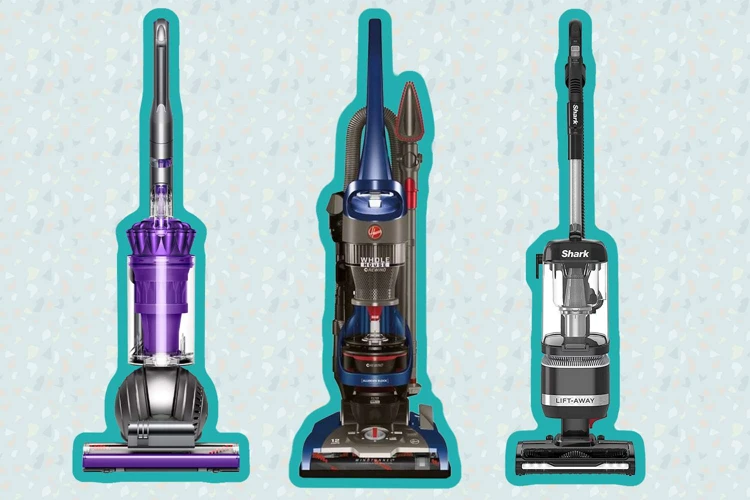
When it comes to choosing a smart vacuum cleaner to help improve indoor air quality and reduce allergens, there are a few important factors to consider. Here are some tips to help you choose the right smart vacuum cleaner for your needs.
1. Consider the Filtration System: Look for a vacuum cleaner with an advanced filtration system that can effectively capture smaller particles such as dust, pollen, and pet dander. High-efficiency particulate air (HEPA) filters are known for their effectiveness in capturing even the tiniest of particles, making them a great choice for allergy sufferers.
2. Pick the Right Type of Vacuum Cleaner: There are many types of vacuum cleaners to choose from, including upright, canister, stick, and robotic models. Consider your specific needs and preferences, such as the size of your home and the types of surfaces you need to clean, when choosing the right type of vacuum cleaner.
3. Look for Allergen-Specific Features: Many smart vacuum cleaners come with allergen-specific features, such as specialized brush heads and tools for removing pet hair and dander. Some models also include UV sanitizing technology that can kill bacteria and germs on surfaces in your home.
4. Check Battery Life: If you’re considering a cordless smart vacuum cleaner, check the battery life to ensure it can run long enough to clean your entire home. Some models come with removable batteries that can be swapped out for longer cleaning sessions.
5. Read Reviews: Before making a purchase, read reviews from other customers to get an idea of the effectiveness and reliability of the vacuum cleaner you’re considering. Look for reviews that specifically mention improvements in indoor air quality and allergy relief.
By considering these tips when choosing a smart vacuum cleaner, you can find a model that effectively improves your indoor air quality and reduces allergens in your home.
Consider the Filtration System
When choosing a smart vacuum cleaner, one of the most important factors to consider is the filtration system. This component determines how efficiently the vacuum can capture and remove dust, dirt, and other particles from the air. Without a good filtration system, these particles can be released back into the air, reducing the overall air quality in your home. But with the right filtration system, you can enjoy cleaner air and a more comfortable living space. Let’s take a closer look at what to consider when evaluating filtration systems in smart vacuum cleaners.
Pick the Right Type of Vacuum Cleaner
When selecting a smart vacuum cleaner, it’s essential to pick the right type that suits your needs.
Corded vs Cordless Vacuums: Corded vacuums offer more suction power and unlimited cleaning time compared to cordless vacuums which offer more maneuverability and convenience.
Upright vs Canister Vacuums: Upright vacuums are suitable for larger spaces and come with rotating brushes that remove dirt and debris from carpets effectively. On the other hand, canister vacuums have flexible hoses and are perfect for cleaning stairs, under furniture, and tight spaces.
Bagged vs Bagless Vacuum Cleaners: Bagged vacuums require less cleaning, are easier to empty, and are more hygienic. However, bagless vacuums offer more convenience since you don’t have to replace bags. They require regular cleaning of filters and dustbins, and their overall maintenance can be more expensive.
Robotic Vacuum Cleaners: These vacuums are designed for convenience and require minimal human intervention. They are perfect for busy people who wish to return home to a clean house. However, robotic vacuums don’t offer the same level of deep cleaning as traditional vacuums and are more expensive.
When selecting the right type of vacuum cleaner, consider your household needs and preferences before making a purchase. Choose a vacuum that suits your needs and lifestyle, and don’t compromise on quality for price. Keep in mind that a high-quality vacuum cleaner can improve your indoor air quality and contribute to a healthier home environment.
Look for Allergen-Specific Features
When choosing a smart vacuum cleaner to help reduce allergens in your home, it is important to pay attention to allergen-specific features. These features can help improve the overall efficiency of the cleaner and provide a more thorough cleaning experience. Here are some of the allergen-specific features you should look for:
- HEPA Filter: High-Efficiency Particulate Air (HEPA) filters are designed to capture even the finest particles, including common allergens like dust mites, pet hair, and pollen. Look for vacuum cleaners with HEPA filters to ensure maximum removal of these allergens.
- Anti-Allergen Seal: An anti-allergen seal is a feature found in some smart vacuum cleaners that helps prevent allergens from escaping back into the air. This is especially important for individuals with allergies and asthma who are easily triggered by airborne allergens.
- Allergen-Specific Cleaning Attachments: Some smart vacuum cleaners come with allergen-specific attachments, such as crevice tools and dusting brushes, that are designed to target particular allergens in hard-to-reach places. For example, a pet hair tool can be very effective at removing pet dander and hair from furniture and carpets.
- UV-C Light: Ultraviolet-C light is known to kill bacteria, viruses, and other harmful particles. Certain smart vacuum cleaners come equipped with UV-C lights, which can be a great feature for individuals looking for added protection against allergens.
By choosing a smart vacuum cleaner with these allergen-specific features, you can greatly improve the air quality in your home and reduce the number of allergens present. However, it is important to keep in mind that a smart vacuum cleaner is just one piece of the puzzle when it comes to reducing allergens in your home. To fully optimize the air quality in your home, you should also consider other strategies such as keeping your home clean and tidy, managing humidity levels, and minimizing exposure to allergens from outside.
Other Strategies for Improving Indoor Air Quality and Reducing Allergens
Maintaining good indoor air quality is crucial for a healthy home environment. While a smart vacuum cleaner is an effective tool to reduce allergens, there are other strategies you can implement to further improve air quality and reduce allergens. Let’s take a closer look at some of these strategies.
Keep Your Home Clean and Tidy
Regular cleaning is essential to eliminate dust and allergens from your home. Vacuuming carpets and rugs, dusting surfaces, and wiping down electronics can effectively reduce the amount of dust and allergens in your home. Make an effort to clean your home regularly to keep the air clean and free of allergens.
Manage Humidity Levels
High humidity levels can lead to the growth of mold and dust mites, which are major allergens. Using a dehumidifier in humid areas, like the basement or bathroom, can help manage humidity levels and prevent the growth of these allergens. It’s important to keep humidity levels between 30-50% to reduce allergens.
Minimize Exposure to Allergens from Outside
Allergens from outside can easily make their way inside through open windows and doors. Using an air purifier can help capture allergens from outside and prevent them from entering your home. Additionally, regularly changing air filters in your HVAC system can improve indoor air quality and reduce allergens.
Incorporating these strategies along with using a smart vacuum cleaner can significantly improve indoor air quality and reduce allergens in your home. It’s important to prioritize a healthy home environment for yourself and your family.
Keep Your Home Clean and Tidy
Maintaining a clean and tidy home is one of the most effective strategies for improving indoor air quality and reducing the presence of allergens. However, it can be challenging to keep up with cleaning tasks, especially if you have a busy schedule. Fortunately, there are several tips and tricks that you can use to make cleaning easier and more efficient. In this section, we will explore some practical strategies for keeping your home clean and tidy to improve indoor air quality and reduce allergens. From decluttering and dusting to vacuuming and disinfecting, we will cover everything you need to know to create a cleaner, healthier living environment.
Manage Humidity Levels
Maintaining optimal humidity levels is crucial for improving indoor air quality and reducing the presence of allergens. Too much humidity can result in the growth of mold, mildew, and dust mites, which can trigger allergic reactions. On the other hand, low humidity levels can lead to dry skin, sinus problems, and respiratory issues. Here are some strategies for managing humidity levels in your home:
- Use a dehumidifier. If you live in an area with high humidity levels, consider investing in a dehumidifier. This appliance can help remove moisture from the air and prevent the growth of mold and mildew. Be sure to follow the manufacturer’s instructions for optimal usage.
- Avoid over-watering indoor plants. Plants release moisture into the air through a process called transpiration. While plants can improve indoor air quality by absorbing pollutants, over-watering them can increase humidity levels. Be sure to water your plants only when necessary and do not allow water to accumulate in their trays.
- Fix leaks and plumbing issues promptly. Dripping faucets, leaky pipes, and other plumbing issues can lead to moisture buildup and high humidity levels. Promptly fixing these issues can help prevent mold and mildew growth.
- Use exhaust fans in the kitchen and bathroom. Cooking and showering can release a lot of moisture into the air. Using exhaust fans in the kitchen and bathroom can help remove this moisture and prevent humidity buildup.
- Avoid hanging wet clothes indoors. Hanging wet clothes to dry indoors can increase humidity levels. Consider using a dryer or hanging clothes outdoors when possible.
Managing humidity levels is just one strategy for improving indoor air quality and reducing the presence of allergens. By combining this strategy with others, such as using a smart vacuum cleaner with an advanced filtration system, you can create a healthier and more comfortable living environment.
Minimize Exposure to Allergens from Outside
It is important to minimize exposure to allergens from outside in order to further improve indoor air quality and reduce allergies. Here are some tips to achieve this:
- Keep windows and doors closed: It can be tempting to open windows and doors to let fresh air in, but this also allows pollen and other allergens to enter your home. Keep them closed, especially during high pollen season.
- Use an air purifier: Consider using an air purifier with a HEPA filter to further clean the air inside your home.
- Take off shoes when entering: Pollen and dirt can easily be tracked in on shoes. Encourage everyone in the household to take off their shoes when entering the home to prevent outdoor allergens from entering.
- Keep pets clean: Outdoor allergens can be brought in on your pets. Make sure to regularly give them baths and wipe them down before letting them inside.
- Avoid outdoor activities during high pollen seasons: It is important to avoid outdoor activities, such as gardening or mowing the lawn, during high pollen seasons. If you must be outside, consider wearing a mask to reduce exposure to allergens.
Implementing these strategies can help further reduce allergens and improve the overall indoor air quality in your home.
Conclusion
In conclusion, investing in a smart vacuum cleaner is a wise decision that can greatly improve the indoor air quality in your home. With advanced filtration systems and efficient dust and debris removal, smart vacuums can help to eliminate harmful allergens that can trigger respiratory conditions. Additionally, the allergen-specific cleaning strategies and minimal contact with allergens during cleaning make these devices ideal for those with allergies or asthma.
When choosing the best smart vacuum cleaner for your home, it is important to consider the filtration system, the type of vacuum cleaner, and any allergen-specific features. This will ensure that you get a vacuum that is tailored to your specific needs and can effectively remove allergens from your home.
Of course, investing in a smart vacuum cleaner is just one of many strategies that you can use to improve indoor air quality and reduce allergens. Keeping your home clean and tidy, managing humidity levels, and minimizing exposure to allergens from outside are also important steps that you can take to improve the air quality in your home.
By taking a health-first approach to your home cleaning routine, you can breathe easy knowing that you are doing everything you can to protect your respiratory health and the health of your loved ones. So, why wait? Start exploring your options for smart vacuum cleaners today and achieve a healthier, happier home environment.
Frequently Asked Questions
What is a smart vacuum cleaner and how does it work?
A smart vacuum cleaner is a robot vacuum cleaner that is designed to automatically navigate through your home and clean your floors without requiring any assistance. It typically uses sensors and cameras to detect obstacles and map out the layout of your home, and can be controlled and scheduled through a mobile app on a smartphone or tablet.
What are the benefits of using a smart vacuum cleaner?
The benefits of using a smart vacuum cleaner include hands-free cleaning that saves you time and effort, improved indoor air quality by reducing allergens and dust, and more efficient cleaning through the use of advanced technology and features.
What is indoor air quality and why is it important?
Indoor air quality refers to the air quality in and around buildings and structures as it relates to the health and comfort of the occupants. It is important because poor indoor air quality can contribute to a range of health problems, including allergies, asthma, respiratory infections, and other respiratory issues.
What are allergens and why are they harmful?
Allergens are substances that can cause an allergic reaction in some people. They can be found in a variety of places, including in the air, in food, and on surfaces. Allergens can be harmful because they can contribute to allergic reactions that can range from mild to severe.
What are some of the most common indoor allergens?
Some of the most common indoor allergens include dust mites, pet dander, mold and mildew, and pollen.
How can a smart vacuum cleaner improve indoor air quality?
A smart vacuum cleaner can improve indoor air quality by efficiently removing dust, dirt, and allergens from floors and other surfaces. Some models also feature advanced filtration systems that can capture even the smallest particles, effectively removing them from the air.
What specific features should I look for in a smart vacuum cleaner to reduce allergens?
When looking for a smart vacuum cleaner to reduce allergens, look for models that feature HEPA filtration systems, as well as allergen-specific cleaning modes that are designed to target and remove allergens from floors and surfaces.
What strategies can I use to improve indoor air quality beyond using a smart vacuum cleaner?
You can improve indoor air quality by keeping your home clean and tidy, managing humidity levels, and minimizing exposure to allergens from outside.
How can I choose the right smart vacuum cleaner for my home?
When choosing a smart vacuum cleaner, consider the filtration system, the type of vacuum cleaner (robotic, upright, etc.), and any allergen-specific features that are available. You should also read reviews and compare different models to find one that meets your needs and budget.
Is a smart vacuum cleaner worth the investment?
Yes, a smart vacuum cleaner is worth the investment if you value your time and want to improve your indoor air quality. It can save you time and effort by cleaning your floors automatically, and can also help to reduce allergens and dust in your home.


